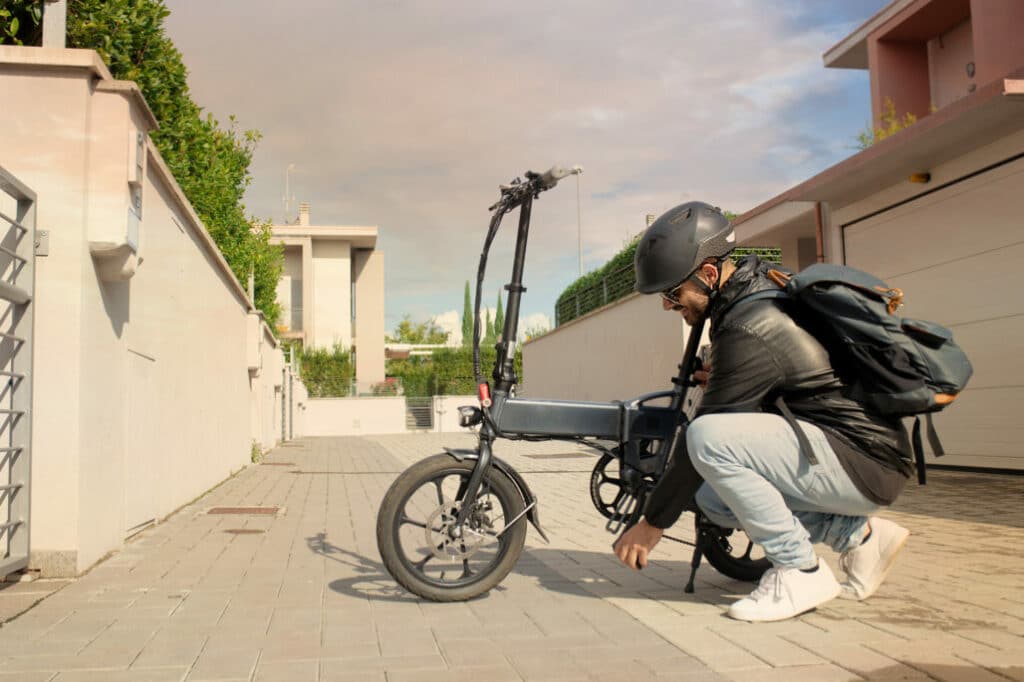Whether you’re in the built-up urban areas or out in the middle of nowhere, you’ll undoubtedly see people riding electric bikes. This is because people are beginning to recognise their benefits of them. But electric bikes are also becoming more affordable, making them accessible to more people.
With the increasing popularity of electric bikes, we thought we’d take a look at the stats to get a more comprehensive perspective of the ebike industry.
Table of Contents
- 1 Let’s Start With Some Background Information
- 2 Our Electric Bike Statistics
- 3 1. How The Electric Bike Market is growing
- 4 2. Lithium-Ion Batteries Are Becoming More Popular
- 5 3. Ebikes Are Big In Asia
- 6 4. Europeans Love Electric Bikes Too
- 7 5. The U.S. Electric bike Market Is Slow To Catch Up
- 8 6. More People Use Electric Bikes Instead Of Cars
- 9 7. Electric Bikes Are Faster For Commuters Than Regular Bikes
- 10 8. The Rise Of Shared Electric Bikes
- 11 9. Electric Bikes Are Good For Your Health
- 12 Final Thoughts
Let’s Start With Some Background Information

Before we get into the numbers, we’ll go back to the origins of ebikes to create some context.
Electric bikes have been around a lot longer than you may realise. The first ebike patent was awarded to Ogden Bolton Jr on 31st December 1895. Like many modern electric bikes, Bolton Jr’s one featured a rear hub-mounted motor.
A second electric bike patent was awarded to Hosea W. Libbey in 1897. But this version used a double electric motor mounted inside the crankset, similar to a modern mid-mounted motor.
The following year, Matthew J. Steffens designed an electric bike that drove the rear wheel with a belt. Then John Schnepf invented one that used rear-wheel friction in 1890.
The evolution of electric bikes stalled for nearly 100 years until the large brands saw their potential. For example, Yamaha built a prototype in 1989 and developed one with a pedal assist in 1993.
Since then, we’ve seen small startups and big brands enter the electric bike market. These brands have significantly affected the kind of bikes we ride now and will ride in the near future.
Our Electric Bike Statistics
1. How The Electric Bike Market is growing

In 2021 the worldwide electric bike market was valued at USD 17.56 billion. But it is expected to get to more than USD 40.98 billion by 2030, growing at a rate of 9.6% per year.
Part of this growth is believed to come from the potential in Europe, as people require a more ecological way of getting around. The U.S. market is expected to take off when electric bike regulations evolve and are removed. But China promises to be the most stable market for the foreseeable future.
2. Lithium-Ion Batteries Are Becoming More Popular

In 2020, 20.83% of electric bikes used lithium-ion batteries, while 20.02% used nickel metal hydride. But 46.41% used lead acid batteries, as they are the most cost-effective option when you consider the USD price per kilowatt-hour.
However, the number of bikes using Lithium-ion batteries is increasing by 3.2% annually, which means that by 2030 the market revenue will be worth USD 13,366.9 million.
This growth is because lithium-ion batteries are lighter and have more capacity than the other types. Battery manufacturers are developing the technology to shrink their size while increasing range. They have also significantly reduced the price of lithium-ion batteries, making them more accessible.
3. Ebikes Are Big In Asia

The Asian electric bike market is predicted to become the largest in 2029. In 2021 the Asia-Pacific electric bike market had a value of USD 5239.17 million. Still, we expect it to reach USD 12553.01 million by 2029.
This is because more people are adopting electric bikes in China and India. But Australia, Taiwan, South Korea, and Japan are expected to do a lot to promote the use of electric bikes over the coming years. Therefore, more people will become aware of their benefits, boosting sales further.
In addition to this, many electric bike manufacturers are relocating to the region. Market specialists predict this will make electric bikes cheaper in the region, as the shipping costs will be dramatically reduced, further increasing their popularity.
4. Europeans Love Electric Bikes Too

In 2021 the European electric bike market was valued at USD 9.01 billion, but it is predicted to get to USD 18.26 billion in 2027. This is down to the increasing popularity of recreational and adventure cycling post COVID-19 lockdowns. However, electric bikes have also been adopted in the logistics sector and as rental bikes, adding to the boost in popularity.
Furthermore, environmental initiatives and awareness are going a long way to encourage people to leave their cars at home in favour of electric bikes. This is backed up by the continuing increases in the cost of living, making commuting by car less viable than an electric bike.
Germany, Netherlands, and France are predicted to be at the forefront of adopting electric bikes. These countries are home to many key players in the industry, while their people are using more eco-friendly modes of transport.
5. The U.S. Electric bike Market Is Slow To Catch Up

Aside from Africa, the USA has been the slowest region to adopt electric bikes for transport. The U.S market has a significantly lower growth rate than Europe and Asia.
The average one-way commute for an American is 26 minutes; in places like New York City, Washington, D.C., and San Francisco, commute times can be over 32-minutes. Still, they are slow to adopt electric bikes, while over a quarter of Europeans are willing to get to and from work on electric bikes.
However, the American electric bike market is going in the right direction and growing yearly, and the rate is also increasing.
In 2021 the electric bike market in North America was valued at USD 0.80 billion. But the compound growth is forecasted to be 12.51% between 2022 and 2027.
After the COVID-19 lockdowns, the American demand for electric bikes rose, with many outlets reporting more than 100% in sales each year. Electric bike manufacturers struggled to meet the demand due to staff shortages and supply chain problems.
The predicted growth is thanks to government investments in bike and pedestrian-friendly urban infrastructure and bike-sharing schemes. The idea is to improve safety and air quality in cities while providing more transport options to Americans.
We are expecting to see many more electric cargo bikes on American streets. This is because logistics companies, including UPS, Fed-Ex, and DHL Express, have adopted them for deliveries in several U.S cities. Electric cargo bikes have powerful motors and a large carrying capacity, suitable for transporting heavy goods through hilly streets. But they are cheaper to run and provide easier access than trucks.
6. More People Use Electric Bikes Instead Of Cars

A study from North America reports that 65% of electric bike riders use their bikes so they can leave their cars at home. This was echoed in a similar study in Australia, which determined that 60% off electric bike owners bought their bikes to replace car trips.
This is hardly surprising when you look at the costs of buying and running a car compared to electric bike ownership.
7. Electric Bikes Are Faster For Commuters Than Regular Bikes

Another study concluded that people can complete a journey 21% faster on an electric bike than on a regular bike. The average speed was determined to be 23.1 km/h for an electric bike and 18.4 km/h for a regular bike.
The increase in speed is due to the use of cycle paths and the avoidance of stop-start traffic.
8. The Rise Of Shared Electric Bikes

Many cities are seeing massive growth in bike-sharing schemes. These schemes are not always successful, as traditional-style shared bikes are heavy and slow. The bikes are intentionally made heavy to improve their robustness while being less attractive to thieves.
Therefore, more bike-sharing schemes are incorporating electric bikes into their fleets. Electric bikes are much better for people who want to use shared bikes instead of cars, as the pedal assist makes commuting much more manageable.
Currently, there are over 1000 bike-sharing schemes around the world, adding up to tens of millions of shared bikes. The introduction of ebikes into these schemes is set to become more popular as the heaviness is neutralised when riding with an electric motor.
There are 192 U.S cities with bike-sharing schemes, and more than 50 include electric bikes. A great example of this is Madison, Wisconsin, which replaced all of its shared bikes with electric ones in June 2019.
The result of doing this has increased shared bike usage by five times. Also, the number of shared bike riders has gone up by a factor of 1.5 to 4.
9. Electric Bikes Are Good For Your Health

A study in 2017 measured the intensity differences riders experience on both electric and regular bikes. Electric bike riders had a 51% intensity on electric bikes and 58% on regular bikes.
The intensity is less, but it means you can get to your destination easier but still experience health benefits. It also means you can ride for longer before feeling tired. Therefore when people went from a regular bike to an electric one, distances increased from 4.8km to 10.5km.
Final Thoughts

As you can see from our 9 vital statistics, electric bikes are becoming more popular. Environmental initiatives, transport costs, improvements in technology, and education are the driving forces behind this flourishing industry.
It won’t be long until most people are getting around on an electric bike. But also expect to see all sorts of niche electric bikes on the roads satisfying individuals’ and businesses needs.
Sharing is caring!


